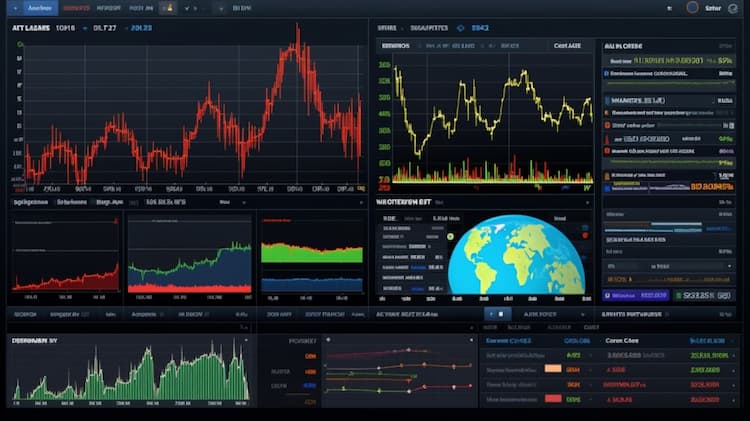
What Is the underlying index that the INDA ETF aims to track?
The INDA ETF is an exchange-traded fund that seeks to replicate the performance of a specific index. Understanding the underlying index is crucial for investors interested in the INDA ETF. In this article, we will explore the index that the INDA ETF aims to track, providing insights into the composition, methodology, and significance of this benchmark. By understanding the underlying index, investors can gain a better understanding of the investment strategy and objectives of the INDA ETF.
Investing in the INDA ETF: Understanding the MSCI India Index
Investing in exchange-traded funds (ETFs) has become increasingly popular among investors seeking exposure to specific markets or sectors. One such ETF is the INDA ETF, which aims to track the performance of the MSCI India Index. This underlying index serves as a benchmark for the Indian equity market and includes a diverse range of large and mid-cap stocks from various sectors. Understanding the INDA ETF and its underlying index is crucial for investors looking to gain exposure to the Indian equity market. In this article, we will explore the advantages of investing in the INDA ETF, the strategies employed to track the underlying index, and the potential impact of tracking error.
Advantages of Investing in the INDA ETF
Diversification and Risk Reduction
Investing in an ETF that tracks an underlying index, such as the INDA ETF, offers several advantages. Firstly, it provides diversification by including stocks from different sectors. By spreading investments across various companies, investors can reduce the risk associated with individual stock investments. This diversification helps cushion against potential losses if a particular stock or sector underperforms.
Transparency and Informed Decision-making
Secondly, tracking an underlying index offers transparency. The composition and performance of the MSCI India Index are publicly available, allowing investors to conduct thorough research and analysis before making investment decisions. This transparency empowers investors to make informed choices based on their investment goals and risk tolerance.
Cost-effectiveness and Tax Efficiency
Lastly, investing in an ETF like INDA can be cost-effective. ETFs generally have lower expense ratios compared to actively managed funds. The lower expenses minimize the impact of fees on returns, allowing investors to keep more of their investment gains. Additionally, ETFs are typically more tax-efficient than mutual funds, as they have lower turnover and do not incur capital gains taxes unless shares are sold.
Strategies for Tracking the Underlying Index
 INDA overlap What Is the underlying index that the INDA ETF aims to track?
INDA overlap What Is the underlying index that the INDA ETF aims to track?
Methods for Tracking the MSCI India Index
To track the performance of the MSCI India Index, ETFs like INDA employ various strategies. Full replication involves holding all or a representative sample of securities included in the index. This approach aims to replicate the index's performance as closely as possible.
Another strategy is sampling or optimized replication, where the ETF selects a subset of securities that closely mimic the index's performance. This approach is commonly used when the underlying index includes a large number of securities, making it impractical to hold all of them.
Lastly, synthetic replication, though less common, uses derivatives to replicate the returns of the underlying index. This approach involves entering into swap agrEEMents or other derivative contracts to replicate the index's performance.
Managing Tracking Error
Minimizing Tracking Error in INDA ETF
While ETFs strive to closely track their underlying indices, slight deviations in performance, known as tracking error, may occur. Factors such as trading costs, liquidity constraints, and timing differences can contribute to tracking error. ETF managers employ various techniques to manage tracking error and ensure that the ETF's performance aligns as closely as possible with the underlying index.
Conclusion
Gaining Exposure to the Indian Equity Market with the INDA ETF
The INDA ETF provides investors with an opportunity to gain exposure to the Indian equity market by tracking the performance of the MSCI India Index. By investing in the INDA ETF, investors can enjoy the advantages of diversification, transparency, and potential cost-effectiveness. It is important to understand the different strategies employed by ETFs to track underlying indices and the potential impact of tracking error. Investors should conduct thorough research and consider their investment goals and risk tolerance before making investment decisions. Remember, seeking guidance from a financial advisor is always recommended before investing in any financial product.
Disclaimer
This article is for informational purposes only and does not provide investment advice or any investment advisory services. Investors should conduct their own research and consult with a qualified financial advisor before making any investment decisions.
Source 1: [https://www.ishares.com/us/products/239621/ishares-msci-india-etf](INDA issuer website)
Source 2: [https://www.reuters.com/markets/quote/INDA/](Reuters article about INDA)
INDA quote and analysis
Discover the top holdings, correlations, and overlaps of ETFs using our visualization tool.
Our app allows you to build and track your portfolio.
To learn more about the INDA iShares MSCI India ETF, access our dedicated page now.
FAQ
What is the INDA ETF?
The INDA ETF, or iShares MSCI India ETF, is an exchange-traded fund that provides investors with exposure to the Indian equity market.
What is the underlying index that the INDA ETF aims to track?
The INDA ETF aims to track the performance of the MSCI India Index, which represents a broad range of large and mid-cap Indian companies.
What types of companies are included in the INDA ETF?
The INDA ETF includes companies from various sectors, such as information technology, financials, consumer goods, energy, and more, providing diversification within the Indian market.
How does the INDA ETF work?
The INDA ETF operates by pooling investors' funds to purchase a portfolio of securities that closely mirrors the performance of the underlying index, allowing investors to gain exposure to a diversified basket of Indian companies.
What are the advantages of investing in the INDA ETF?
Investing in the INDA ETF offers diversification across the Indian equity market, providing access to a growing economy with significant potential for long-term growth. It simplifies investing in Indian companies, offers liquidity, and allows for portfolio diversification.











